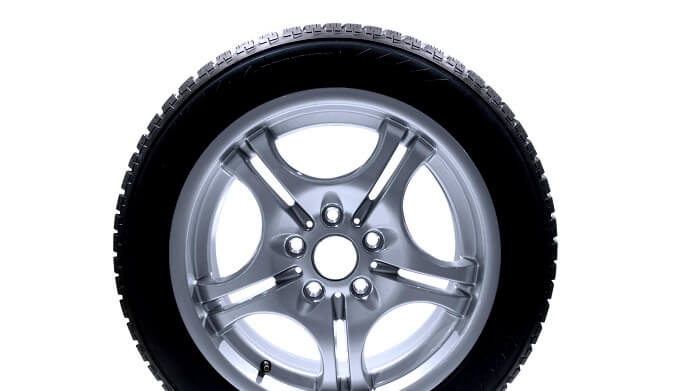Rim Width Tire Size Chart

Tires play a crucial role in ensuring the safety, performance, and aesthetics of a vehicle. One often overlooked aspect when selecting tires is the rim width. The rim width tire size chart provides valuable information to guide tire selection and maximize performance.
We will explore the significance of rim width, understand how to interpret the rim width tire size chart, and discuss the practical application and benefits of using this chart to make informed decisions.
| Rim Width | 25 | 30,35,40 | 45 | 50,55 | 60,65,70 | 75,80 |
|---|---|---|---|---|---|---|
| 3.5 | — | — | — | — | — | 125, 135 |
| 4 | — | — | — | — | 135 | 145 |
| 4.5 | — | — | — | — | 145, 155 | 155, 165 |
| 5 | — | — | — | 155, 165 | 165, 175, 185 | 175, 185 |
| 5.5 | — | — | 165 | 175 | 185 | 195, 205 |
| 6 | — | — | 175, 185 | 185, 195 | 195, 205 | 215, 225 |
| 6.5 | — | — | 195 | 205 | 215, 225 | 235 |
| 7 | — | 195 | 205, 215 | 215, 225 | 235, 245 | 245, 255 |
| 7.5 | — | 205, 215 | 225 | 235, 245 | 255 | 265 |
| 8 | — | 225 | 235, 245 | 255 | 265, 275 | — |
| 8.5 | — | 235, 245 | 255 | 265, 275 | 285, 295 | — |
| 9 | 255 | 255 | 265, 275 | 285 | 305 | — |
| 9.5 | — | 255, 265, 275 | 285 | 295, 305 | 315 | — |
| 10 | 275 | 285 | 295 | — | — | — |
| 10.5 | 285, 295 | 295 | 305, 315 | — | — | — |
| 11 | 305 | 305, 315 | — | 345 | — | — |
| 11.5 | 315 | 325, 335 | — | — | — | — |
| 12 | 325, 335 | 335, 345 | — | — | — | — |
| 12.5 | 345 | — | — | — | — | — |
| 13 | 355 | — | — | — | — | — |
Understanding Rim Width
Rim width refers to the distance between the inside and outside edges of the wheel where the tire sits. It is measured in inches and is an essential parameter to consider when selecting tires.
Proper rim width ensures optimal tire performance and safety. The relationship between rim width and tire size is crucial. Tires have specific recommendations for the range of compatible rim widths.
If the rim width is too narrow or too wide for a particular tire size, it can lead to compromised performance, reduced safety, and potential tire damage.
Several factors influence rim width selection, including the vehicle manufacturer’s recommendations, tire manufacturer’s specifications, desired performance characteristics, and personal preferences. It is essential to consider these factors to ensure the best fitment for your vehicle.

Rim Width Tire Size Chart
A rim width tire size chart is a valuable tool that provides a comprehensive list of tire sizes compatible with different rim widths. It serves as a reference guide to determine the suitable tire sizes for a given rim width.
To read the rim width tire size chart correctly, locate the specific rim width you are interested in. Then, within that section, you will find a list of tire sizes that are recommended for that rim width.
The tire sizes are usually presented in a standardized format, such as 205/55R16, where the first number represents the width of the tire in millimeters, followed by the aspect ratio and rim diameter in inches.
The rim width tire size chart provides essential information, such as the recommended tire widths for a given rim width, ensuring compatibility and preventing potential issues. It also indicates the acceptable range of tire sizes for each rim width, enabling users to make informed decisions based on their specific needs and preferences.
Benefits of Using Rim Chart
Using the rim width tire size chart ensures that the tires you select are appropriate for your vehicle’s rims. This helps prevent issues such as poor handling, irregular wear, decreased fuel efficiency, and potential safety hazards caused by incorrect fitment.
Proper rim width selection contributes to improved safety and performance. Matching the recommended tire sizes to the corresponding rim widths ensures better traction, enhanced stability, and improved handling characteristics. It allows the tire to perform optimally, leading to a safer driving experience.

The rim width tire size chart also aids in enhancing the overall aesthetics of the vehicle. By choosing tire sizes that are compatible with the rim width, you can achieve a balanced and visually appealing look, complementing the vehicle’s design.
Practical Application
Let’s consider a few examples to illustrate the practical application of the rim width tire size chart. For a rim width of 7 inches, the chart may recommend tire sizes such as 225/45R17 or 235/40R18.
These tire size options allow you to choose the one that aligns with your preferences and performance requirements. The rim width tire size chart helps in matching the rim width with the appropriate tire type and vehicle usage.
For instance, wider rims are often preferred for high-performance vehicles as they provide better stability during aggressive cornering. On the other hand, narrower rims are suitable for winter tires as they allow for better snow and ice grip.
Real-world case studies have demonstrated the significant impact of rim width on tire performance. By using the rim width tire size chart and selecting the appropriate tire size, drivers have experienced improved handling, reduced tire wear, increased fuel efficiency, and enhanced overall performance.
Conclusion
Choosing the right rim width is paramount for optimal tire performance, safety, and aesthetics. Neglecting this aspect can lead to compromised handling, reduced safety, and premature tire wear.
The rim width tire size chart is an invaluable resource that empowers vehicle owners to make informed decisions when selecting tires. It ensures proper fitment, enhances safety, and maximizes tire performance.

